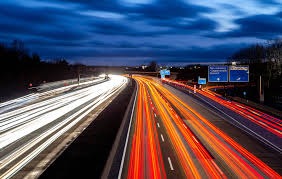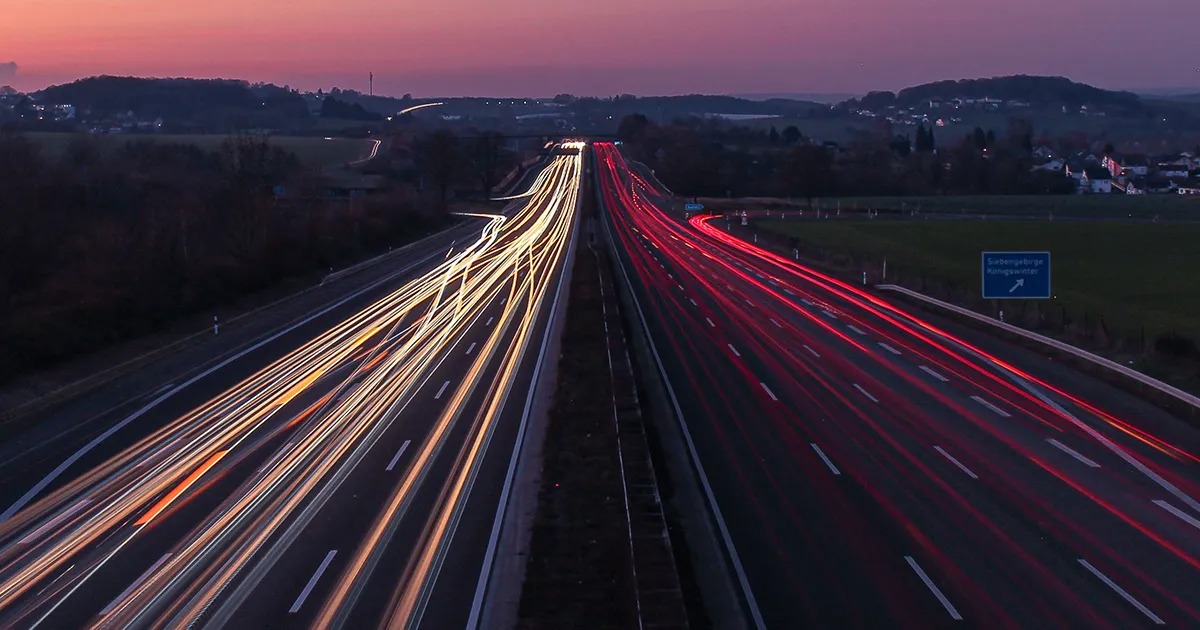When you think of fast driving, one of the first images that might come to mind is the legendary Autobahn. Germany’s highway system, renowned worldwide for its speed limits—or lack thereof—has become a symbol of freedom, precision, and engineering excellence. The Autobahn, however, is more than just a high-speed thoroughfare; it represents a complex and well-maintained road network that plays a significant role in Germany’s transportation infrastructure, culture, and economy.
In this article, we’ll explore the history, design, rules, and features of the Autobahn system, along with some insights into what it’s like to drive on this famous network.
What is the Autobahn?
The term Autobahn refers to a high-speed highway system that spans across Germany and several other European countries. The name itself comes from the German words Auto (car) and Bahn (track or road), which collectively describe roads designed for faster and more efficient travel. The Autobahn network is famous for having sections with no specific speed limits, allowing vehicles to travel at their own pace, as long as it is safe to do so.
However, not all sections of the Autobahn are unrestricted, and there are still areas with speed limits enforced for safety reasons. Even in these areas, the limits tend to be higher than typical highways in other countries.
The History of the Autobahn
The roots of the Autobahn system go back to the 1920s, but the development of a national highway system in Germany was spurred by the Nazi regime in the 1930s. Hitler saw the creation of the Autobahn network as both a way to stimulate the economy and provide a means of military transport. Construction began in earnest in 1933, and the first section of the Autobahn opened in 1935, connecting the cities of Cologne and Bonn.
After World War II, Germany’s Autobahn system continued to expand, and its role in the country’s infrastructure and economic growth became increasingly important. Today, the Autobahn system spans over 13,000 kilometers (approximately 8,000 miles) and connects major cities, regions, and countries in Europe.

Design and Structure of the Autobahn
The Autobahn network is designed to ensure efficient, safe, and fast travel. Some key design elements include:
- Multiple Lanes: Most Autobahns have at least two lanes in each direction, with some sections having up to six or more lanes. This allows for smooth traffic flow, even in areas of heavy congestion.
- No Intersections: Unlike conventional roads, Autobahns do not have intersections or traffic lights. Instead, there are on-ramps and off-ramps where vehicles can enter and exit the highway system.
- No Stopping Zones: On the Autobahn, stopping on the road is strictly prohibited, except in emergencies. There are rest areas and service stations located along the highway for drivers to take breaks and refuel.
- Strict Safety Features: The Autobahn is renowned for its strict safety standards. The road surface is designed for high speeds, and the infrastructure includes barriers, warning signs, lighting, and emergency lanes to ensure safety at high speeds.
Speed Limits on the Autobahn
One of the most exciting features of the Autobahn is the lack of a general speed limit on certain stretches of road. However, this doesn’t mean that drivers can go as fast as they want.
- Unrestricted Zones: There are parts of the Autobahn where there are no speed limits. In these areas, drivers can theoretically drive as fast as their car will allow, provided it is safe to do so. However, vehicles are still required to follow safe driving practices and adjust their speed according to road conditions, weather, and traffic.
- Advisory Speed Limit: Even in the unrestricted zones, there is an advisory speed limit of 130 km/h (about 81 mph). This is a recommended speed for optimal safety but is not enforceable.
- Speed Limits in Certain Areas: In urban areas, near construction zones, or in places with high traffic, speed limits do apply. These speed limits are often posted in kilometers per hour (km/h) and can range from 80 km/h (about 50 mph) to 120 km/h (about 75 mph), depending on the location.
Safety on the Autobahn
Despite its reputation for high speeds, the Autobahn is remarkably safe, thanks to strict regulations and rigorous enforcement. Here’s a breakdown of the safety features that make it one of the safest highway systems in the world:
- Mandatory Insurance: In Germany, all vehicles must have mandatory insurance that covers accidents on the Autobahn.
- No Overtaking on the Right: On the Autobahn, overtaking is strictly done on the left. Overtaking on the right is prohibited and can result in fines.
- Regular Maintenance: The Autobahn is maintained regularly to ensure optimal conditions for driving. Road surfaces are regularly checked and upgraded to ensure they can handle high-speed traffic.
- Accident Assistance: In the event of an accident, there are emergency services readily available to assist drivers. The Autobahn’s clear signage and designated lanes for emergency vehicles ensure that traffic is managed efficiently in case of an emergency.
Driving Etiquette on the Autobahn
Driving on the Autobahn is not just about speed; it’s also about etiquette. German drivers are known for their discipline, and there are several unwritten rules that travelers should be aware of:
- Use the Right Lane: The far right lane is reserved for slower vehicles, while the middle and left lanes are for overtaking. Drivers should keep to the right when not overtaking.
- Indicating Lane Changes: Always use your turn signal (indicator) before changing lanes. Failing to indicate lane changes can result in penalties.
- Drive with Caution: While there are sections without speed limits, it’s still important to drive with caution. Always consider weather conditions, traffic, and visibility before deciding to go at high speeds.
- Stay in Control: It’s essential to make sure your vehicle is in good condition before hitting the Autobahn. Tires, brakes, and engine performance should be checked regularly to ensure safety at high speeds.
- Be Prepared for Speed: While it might be tempting to drive fast, always keep in mind the capabilities of your vehicle and your own driving experience. It’s advisable to stick to the advisory speed of 130 km/h if you’re unfamiliar with high-speed driving.
Benefits of the Autobahn
The Autobahn system offers numerous advantages, including:
- Efficiency: With high-speed travel and direct routes between major cities, the Autobahn makes it easy to travel long distances quickly and efficiently.
- Boost to the Economy: The Autobahn supports both domestic and international trade by facilitating the rapid movement of goods across the country and beyond.
- Tourism: Tourists from all over the world come to experience the Autobahn, particularly the unrestricted zones, which adds to Germany’s appeal as a travel destination.
- Reduced Travel Time: Whether you’re heading to a business meeting or going on a road trip, the high-speed nature of the Autobahn reduces travel time considerably.
Conclusion
The Autobahn is more than just a highway; it’s a symbol of efficiency, speed, and safety. Whether you’re driving on the unrestricted zones, obeying speed limits, or simply cruising through scenic routes, the Autobahn offers a driving experience like no other. Its design, safety features, and road etiquette make it one of the safest and most efficient road networks in the world. For anyone traveling through Europe, experiencing the Autobahn is a must—it’s an iconic part of the continent’s driving culture.















 Luxury hotel stays near the Tower of Pisa
Luxury hotel stays near the Tower of Pisa 













